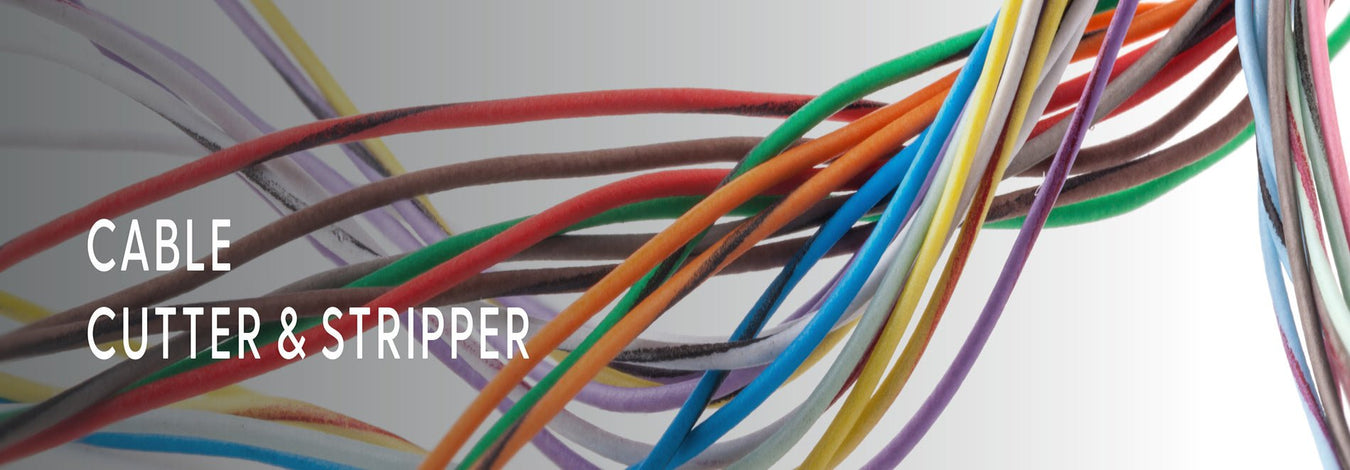
How to Use a Wire Rope Crimping Tool
Wire ropes are versatile and used across various industries, from manufacturing, lifting, and automotive to construction. However, most applications require using a wire rope with some type of assemblies, which entails a wire fitting at the end of the wire rope. To make this kind of connection, you need a wire rope crimping tool which is also called a wire rope swager. It’s used to compress a fitting to wire rope to form a secure and tight connection.
Knowing how to properly use a wire rope crimping tool is important for professionals and individuals doing DIY projects. This is a step-by-step guide to making a secure crimp connection using this tool.
Tools and Materials Needed
1. A wire rope
Choose the right cable construction. Consider using 7x7 and 7x19 strand cables. Mechanically, a cable wire with a diameter larger than 3/8” is considered a wire rope, while cables with a smaller diameter are called mechanical cables.
2. Fittings
Consider choosing the right size of hourglass swages/ crimp sleeves since they offer a smoother and stronger crimp than oval or stop sleeves. Depending on the application, you can choose between copper, stainless steel, and aluminum swage sleeves.
3. Thimble fittings
Thimbles are used at the loop/eyelet of the wire rope to prevent friction from fraying the wire rope once anchored.
4. A Wire crimping tool
Choose a crimping tool that matches your wire rope’s diameter. The iCrimp 1608B Wire Rope Crimping Tool is ideal for all aluminum and copper sleeves and features five cavities for 1/6 to 3/6 inch wire rope cables.
5. A wire cutter
It’s used to cut the wire rope to the desired length.
Step-by-Step Process
A. Measure and cut the rope wire
Measure and mark the required length of your rope wire. Then, hold the wire cutter and align it with the marked cutting point to complete the cut. A high-quality cutter like the iCrimp CWR60 Wire Rope Cutter consistently helps you get clean cuts (no frayed wire). You may as well consider wearing gloves and safety goggles for safety purposes.
B. Insert swages/crimp sleeves onto the wire rope
Start by inserting the wire rope into one of the holes on the sleeve and then make a loop/eye to insert the same end of the wire rope through the other hole on the sleeve. Then, position your thimble fitting on the loop and slide towards the thimble to secure it in place. Ensure both fittings are close to each other.
Suppose you’ve excess wire rope popping out of the loop; you can adjust the loop. Alternatively, you can cut the excess later after crimping.
C. Crimp the sleeves to the wire rope
Start by selecting the proper die with the right jaw matching your swage sleeve’s size. Then, place the sleeve into the wire rope crimping tool’s jaw. The sleeve should be vertically aligned with the cavity of your tool. Make the first crimp by squeezing your tool’s handles until the jaws are completely closed. Leave a small space and make another crimp. Note that there is a recommended number of crimps you should make on a sleeve depending on its size.
D. Inspect the crimp
You can visually inspect the crimp connection: you should have smooth and uniform crimps. You can also use a gauge to verify whether crimping is on point: if the corresponding cavity of the gauge slides and turns freely over the crimped section, then you have a proper crimp. If the gauge doesn’t slide over, use your tool again to make a better crimp.
You can read more on how to validate a crimp quality.
E. Test the connection
You can apply some controlled force to pull the wire rope and test the strength/tightness of the assembly. If there are no signs of slippages or failure, you can proceed and use the wire rope for the intended use.
Bottom line
Do you have a project or a repair that requires the crimping of wire ropes? iCrimp is the ideal platform for all wire rope crimping tools, from Pneumatic and handheld to bench wire rope crimping tools. Our tools are durable, ergonomically designed, and easy to use.
References





